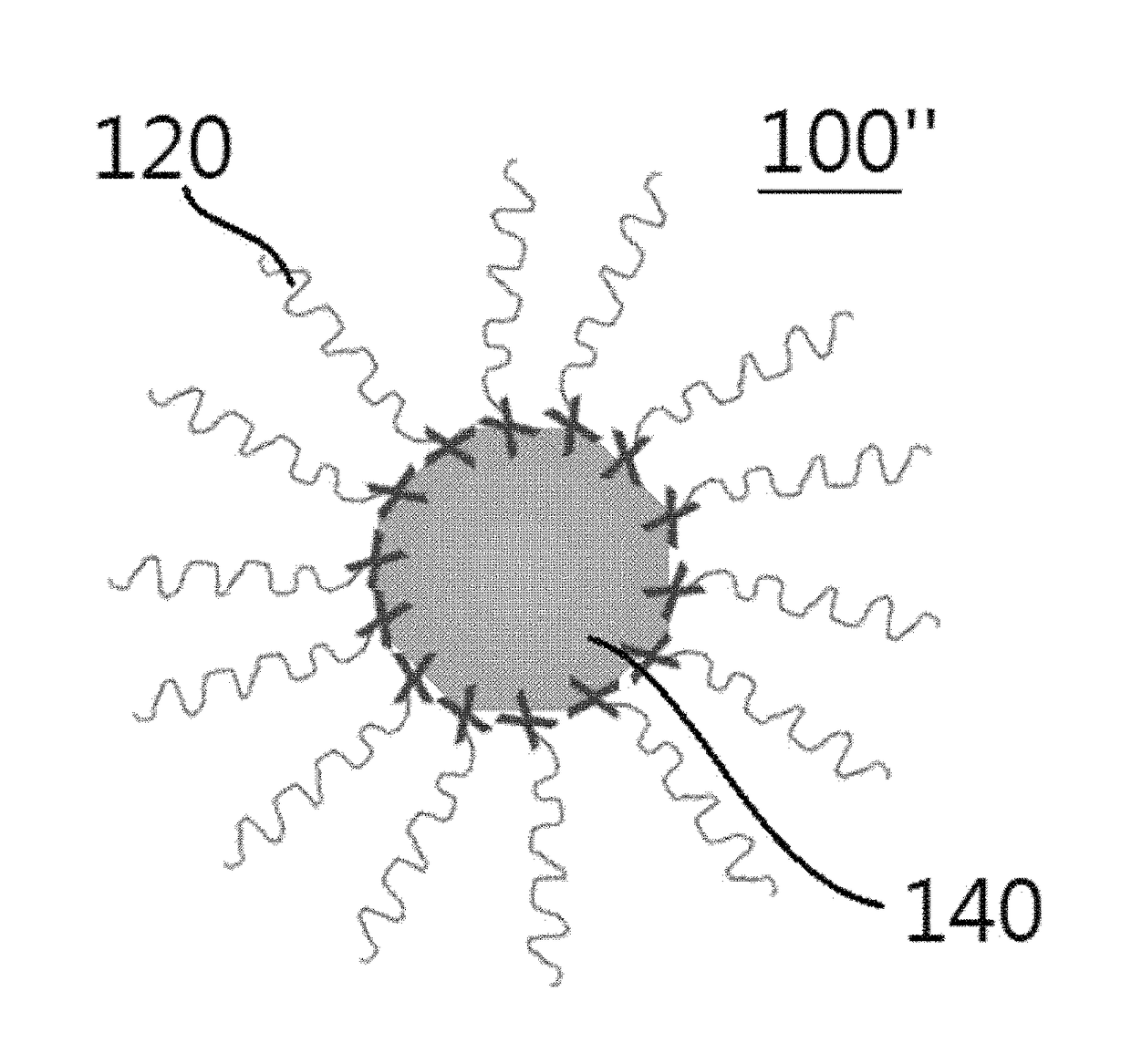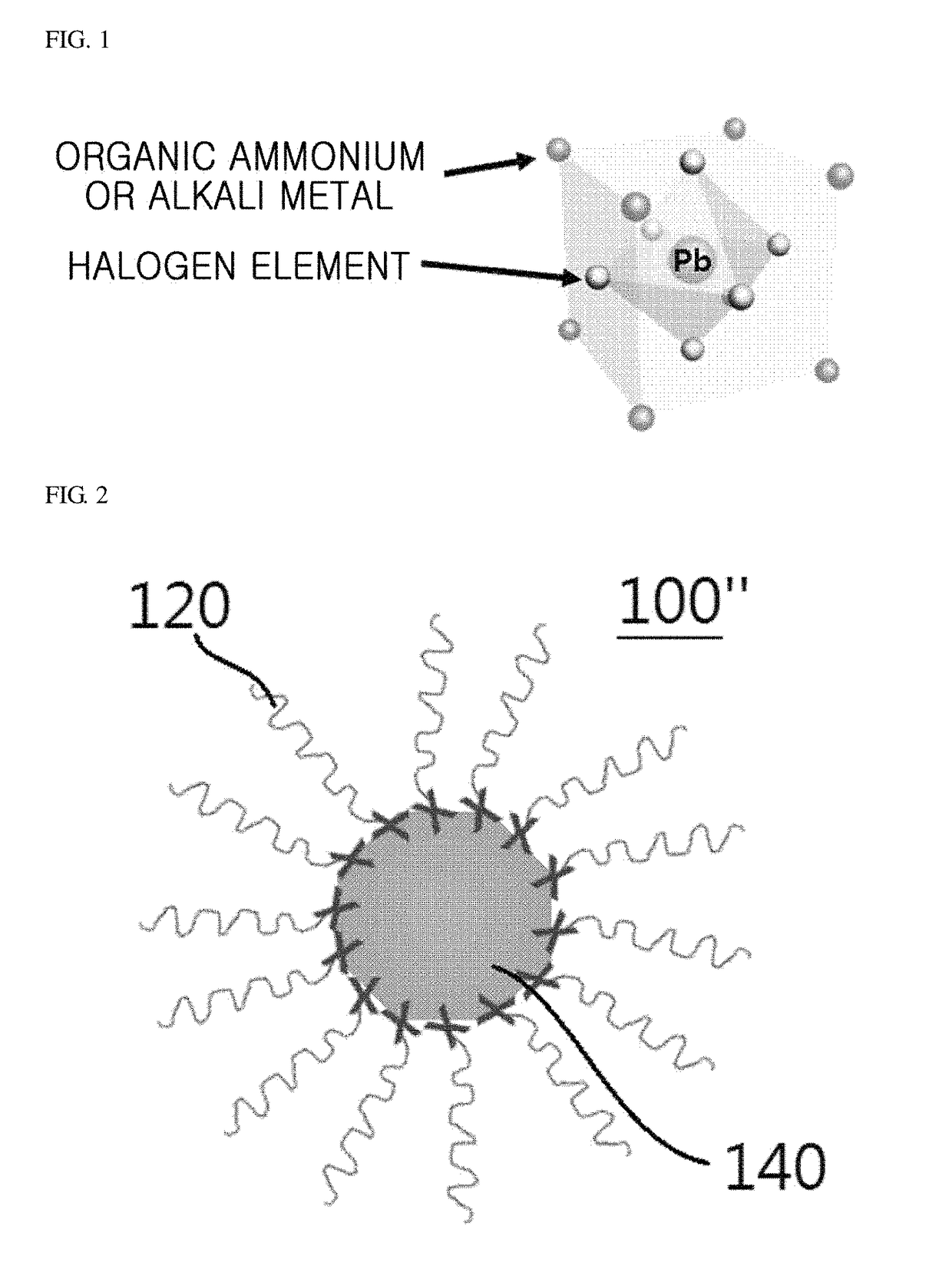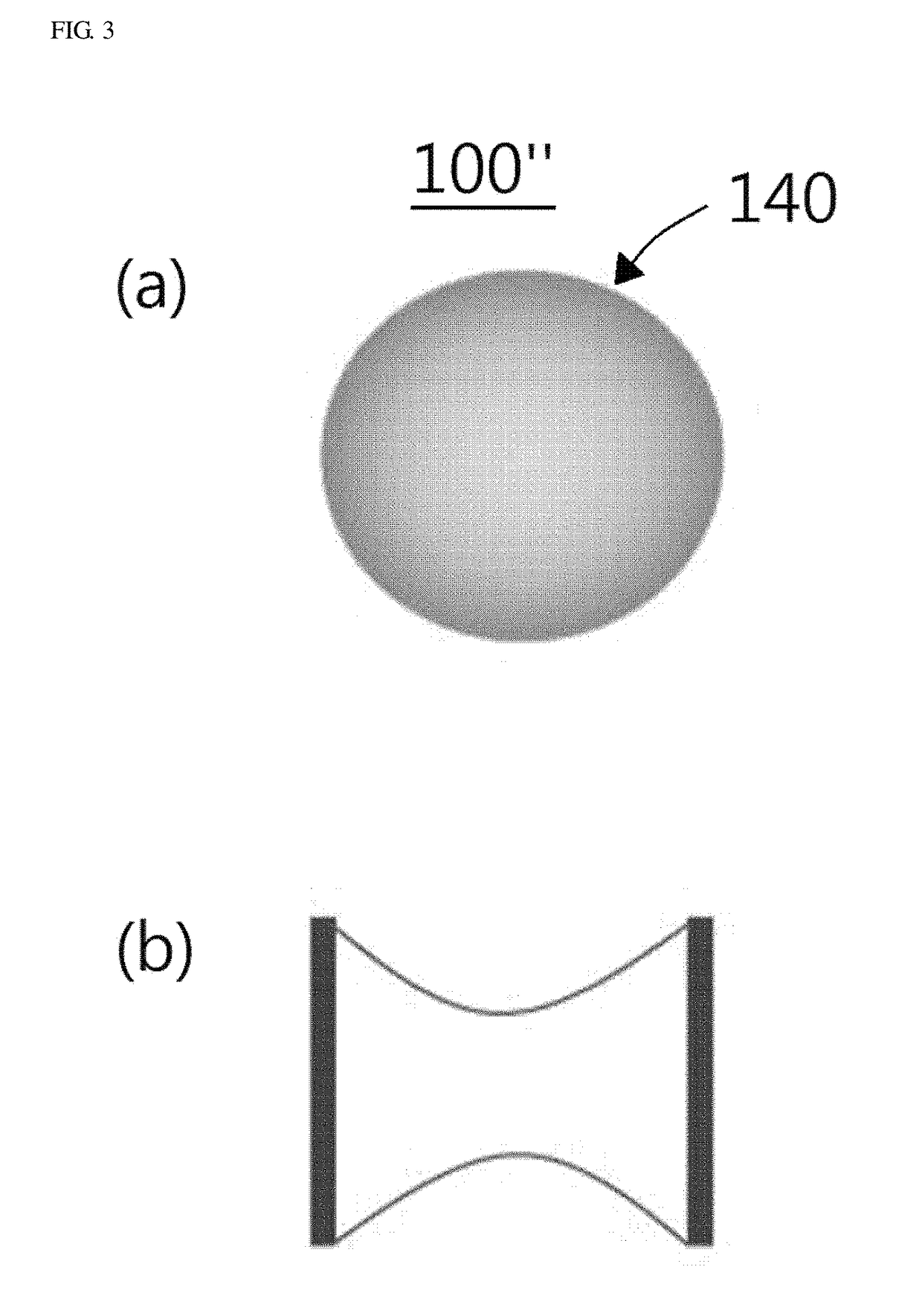Perovskite nanocrystal particle light-emitter whose content is changed, method of producing the same, and light emitting element using the same
a nanocrystal particle and light-emitting element technology, applied in the direction of organic semiconductor devices, light-sensitive devices, light-emitting capacitors, etc., can solve the problems of reduced color purity, high efficiency of light-emitting devices, and inability to meet the requirements of light-emitting devices, so as to improve light luminescence efficiency, reduce exciton binding energy, and reduce the length of diffusion
- Summary
- Abstract
- Description
- Claims
- Application Information
AI Technical Summary
Benefits of technology
Problems solved by technology
Method used
Image
Examples
production example 1
[0148]A perovskite nanocrystal colloidal particle light-emitter having a 3D structure according to one embodiment of the present invention was formed. The perovskite nanocrystal particle light-emitter having a 3D structure was formed through an inverse nano-emulsion method.
[0149]Specifically, a first solution was prepared by dissolving a perovskite in a polar solvent. In this case, dimethylformamide was used as the polar solvent, and CH3NH3PbBr3 was used as the perovskite. The CH3NH3PbBr3 used herein was a mixture of CH3NH3Br and PbBr2 in a ratio of 1:1.
[0150]A second solution was prepared by dissolving an alkyl halide surfactant in a non-polar solvent. In this case, toluene was used as the non-polar solvent, and octadecylammonium bromide (CH3(CH2)17NH3Br) was used as the alkyl halide surfactant.
[0151]Then, the perovskite nanocrystal particle light-emitter having a 3D structure was formed by slowly dropwise adding the first solution to the strongly stirring second solution.
[0152]The...
production example 2
[0154]Production Example 2 was performed in the same manner as Production Example 1 except that a perovskite nanocrystal particle light-emitter having a 3D structure according to one embodiment of the present invention was formed by using CH3(CH2)13NH3Br as an alkyl halide surfactant.
[0155]In this case, a size of the formed perovskite nanocrystal particle is about 100 nm.
production example 3
[0156]Production Example 3 was performed in the same manner as Production Example 1 except that an a perovskite nanocrystal particle light-emitter having a 3D structure according to one embodiment of the present invention was formed by using CH3(CH2)10NH3Br as an alkyl halide surfactant.
[0157]In this case, a size of the formed perovskite nanocrystal particle is about 300 nm.
PUM
| Property | Measurement | Unit |
|---|---|---|
| size | aaaaa | aaaaa |
| FWHM | aaaaa | aaaaa |
| size | aaaaa | aaaaa |
Abstract
Description
Claims
Application Information
 Login to View More
Login to View More - R&D
- Intellectual Property
- Life Sciences
- Materials
- Tech Scout
- Unparalleled Data Quality
- Higher Quality Content
- 60% Fewer Hallucinations
Browse by: Latest US Patents, China's latest patents, Technical Efficacy Thesaurus, Application Domain, Technology Topic, Popular Technical Reports.
© 2025 PatSnap. All rights reserved.Legal|Privacy policy|Modern Slavery Act Transparency Statement|Sitemap|About US| Contact US: help@patsnap.com



